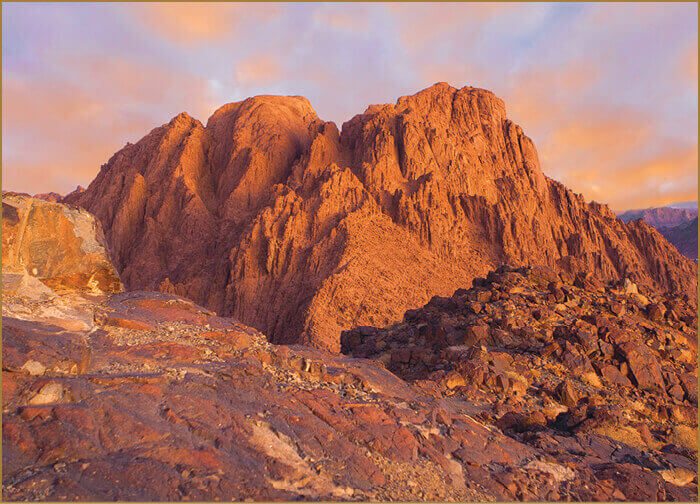Mount Sinai—Temple Symbolism
The Sinai texts, set forth in Exodus 19–20, 24, 34, reveal that Mount Sinai was a natural temple. Elder Marion G. Romney taught that “Sinai became a temporary sanctuary from which he taught Moses.”212 And President Joseph Fielding Smith explained, “The Lord made of Sinai a temple and there gave to Moses the Gospel and the Law.”213 Temple elements at Sinai included the mountain itself, sacrificial offerings, religious laws, the waters of life, divine revelation, a sacred meal, gradations of holiness, God’s law, plus more.214

Mount Sinai at sunrise.
Additionally, Mount Sinai was divided into three zones of holiness, which prefigured the gradations of holiness that were attached to the tabernacle and Solomon’s temple. Biblical scholar Jacob Milgrom explains,
Mount Sinai is the archetype of the Tabernacle, and is similarly divided into three gradations of holiness. Its summit is the Holy of Holies; God’s voice issues forth from there (Exodus 19:20) as from the inner shrine (Exodus 25:22; Numbers 7:89); the mountaintop is off limits to priest and layman alike (Exodus 19:24) and its very sight is punishable by death (Exodus 19:21), and so with its Tabernacle counterpart (cf. Leviticus 16:2 and Numbers 4:20); finally, Moses alone is privileged to ascend to the top (Exodus 19:20; see 34:2) just as later, the high priest is permitted to enter the inner shrine under special safeguards (Leviticus 16:2–4). The second division of Sinai is the equivalent of the outer shrine, marked off from the rest of the mountain by being enveloped in a cloud (Exodus 20:21; 24:15–18) just as the cloud overspreads the entirety of the Tabernacle (Numbers 9:15–22). . . . Below the cloud is the third division. . . . Here is where the altar and stelae are erected (Exodus 24:4). It is equivalent to the courtyard, the sacred enclosure of the Tabernacle.215